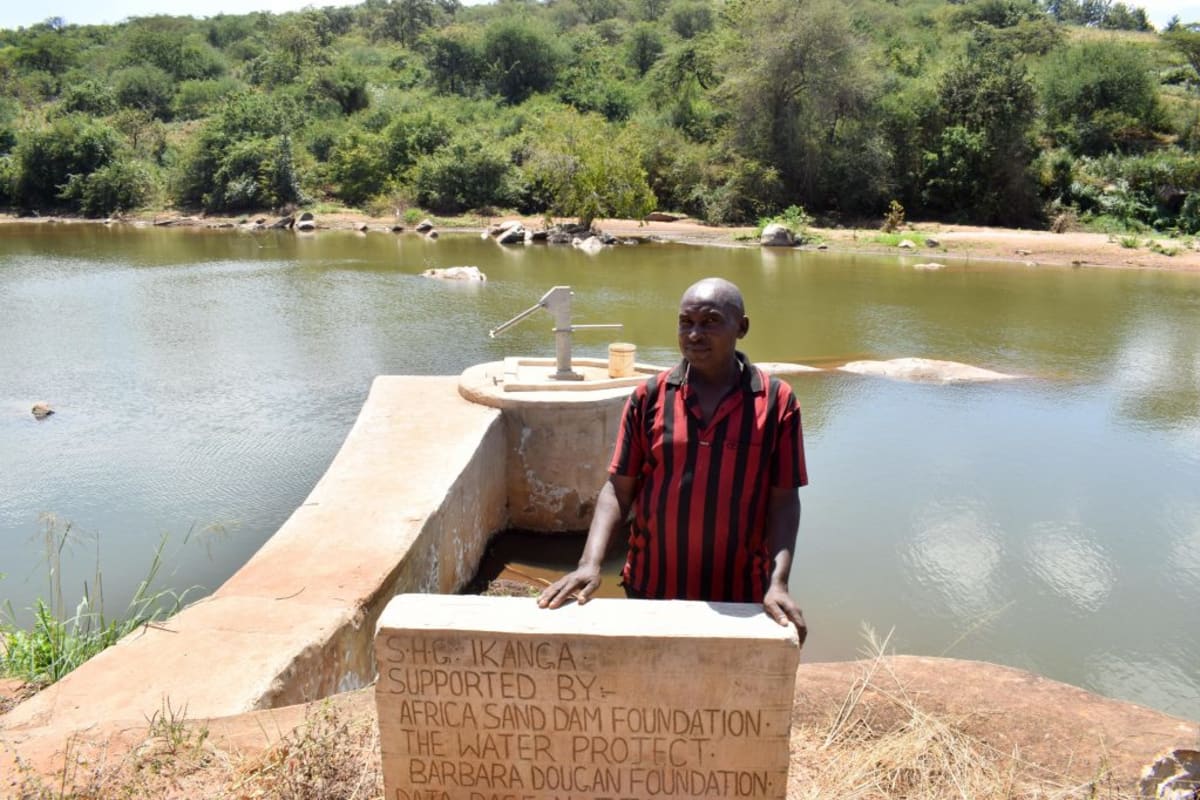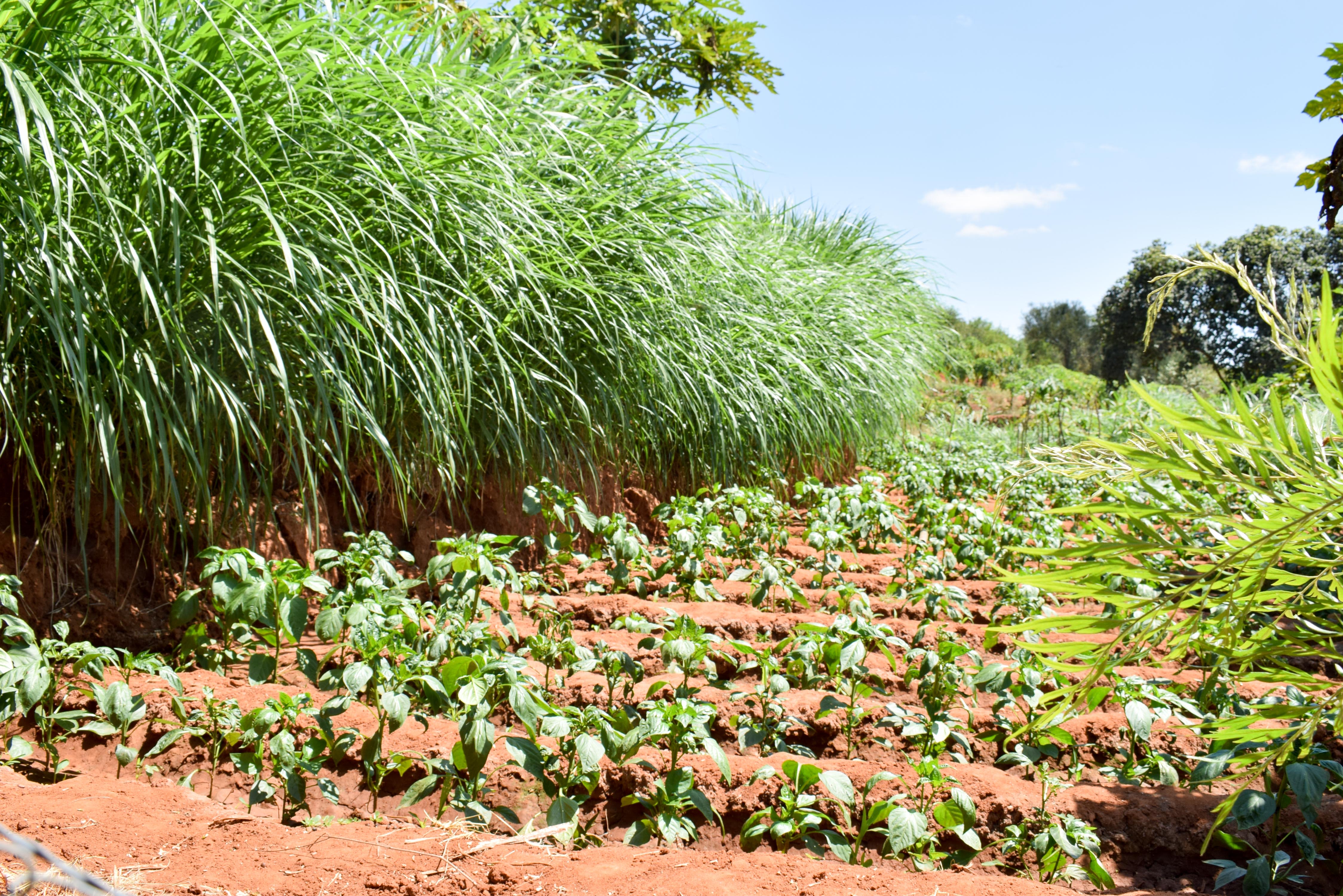This project is a part of our shared program with Africa Sand Dam Foundation. Our team is pleased to directly share the below report (edited for clarity, as needed).
Welcome to the Community
Ikanga Self-Help Group was formed in the year 2016 with a mission of constructing gabions in Thwake River. They wanted these to harvest water and then pipe it to tanks at their home compounds. As of yet, no construction has been completed.
The group now has 27 members who come from Kasioni and Ngaa Villages, which have a combined population of 4,220 people. The mean age of group members is 44, and the average size of each household is six.
(Editor's Note: While this many people may have access on any given day, realistically a single water source can only support a population of 350-500 people. This community is a great candidate for ASDF's five-year development plan. To learn more, click here.)
When asked about food security in their homes, 80% said that they hadn't faced any food challenges for the last three months. Another 20% said that they survive on borrowing food and restrict adults from taking food so that children can eat first.
46% of the respondents earn more than 10,000 shillings a month while 27% earn between 3,000 and 10,000 shillings, and the last 27% earn less than 3,000 shillings. With an average family size of six, this calls for intervention to improve both income and food production.
Members of this group heard about us from Kyeni Self-Help Group, who we've been working with for a while. They then approached our field officer Mr. Benson Kituku with a request for support. Members of Ikanga had already helped us build sand dams with two other groups in the area, so the project approval process was much faster.
Water Situation
Most of the group members have hooked up plastic tanks to harvest rainwater off their roofs, while the rest walk to River Thwake. However, it's important to note that rainwater can only be harvested during three rainy months each year. The rest of the year, these people join their neighbors in traveling to the river.
At the river, holes must be dug in the riverbed to reach water. Certain holes are used for watering livestock, while others are set aside just for human consumption. Most often, an adult will bring along a 20-liter jerrycan. If their family has a donkey or ox-drive cart, they will use these to carry even more water. A typical donkey can haul four full 20-liter jerrycans.
Water harvested at home is safe for drinking, but the water from scoop holes at the river is contaminated. These holes are open to contamination from surface runoff, erosion, and human activity.
After drinking this contaminated water, people suffer from waterborne diseases and the resulting treatment costs. Common diseases include amoeba, typhoid, bilharzia, and ringworm.
Sanitation Situation
100% of group member have a pit latrine, and report that their neighbors have one also. The conditions of these latrines depend on the economic status of each family, and we were happy to find that many families making over 10,000 shillings a month have been able to invest in VIP (ventilated improved pit) latrines. Some others lack doors, but just have a curtain hanging in the opening. Because of this full latrine coverage, open defecation is not an issue in these two villages.
A little under half of households have a hand-washing station installed outside their latrine. Most have a designated area for throwing garbage though some still need to dig a pit. A few households have other helpful tools like dish racks and clotheslines to dry their belongings safely of the ground.
Plans: Hygiene and Sanitation Training
Since this is our first hygiene and sanitation training in Kasioni, training will be held for three days. The members will learn about useful practices and tools to improve health, and will be encouraged to share those with their families and neighbors. Water transport, storage, and treatment methods will be taught, and hand-washing will be a focus. Group members will learn how to make their own hand-washing stations with everyday materials. To motivate participants, we must show the links between these activities and their people’s health.
Plans: Sand Dam
Their first proposed site for a sand dam in Kataluni was also approved by our technical team because there is firm bedrock and wide banks. This particular sand dam is projected to be 89.2 meters long and 4.8 meters high.
This sand dam will be one of many construction projects to come in the next few years. We will spend a total of five years unified with this community to address the water shortage. More sand dams will be built to transform the environment. As the sand dams mature and build up more sand, the water tables will rise. Along with these sand dams, hand-dug wells will be installed to give locals a good, safe way to access that water.
With these projects, clean water will be brought closer to hundreds living around Kasioni.
As the sand dam construction begins, community members will start excavating their first adjacent hand-dug well (click here to see that well project).

 Sand Dam
Sand Dam
 Rehabilitation Project
Rehabilitation Project































